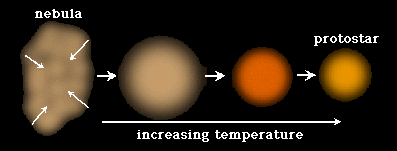How would you describe the formation of our Sun from nebula to main sequence?
1 Answer
Collapsing Nebula forms protostar, which forms Main Sequence Star.
Explanation:
The formation of our sun from a nebula to a Main Sequence star is quite simple. First, a star forming nebula starts to collapse (aka condense), and this forms a protostar. A protostar is almost pre-star so to speak. It is not hot enough to fuse Hydrogen, so it is not on the main sequence. Protostars can fuse a proton to deuterium, but that's not important.
The increasing pressure caused by the continual state of compression & collapse induced by gravity (a hallmark of a protostar is that it is always in a state of collapse one way or another until it is a Main Sequence Star) raises the temperature in the core enough to fuse Hydrogen (core temperature needed: three million Kelvin).
After this, the star is now in a very brief stage of its life known as the T-Tauri stage. In the T-Tauri stage, a star has very violent bi-polar solar winds.
And after the T-Tauri stage, you have a sun-like, G class, Hydrogen burning (fusing) Main Sequence star in Hydrostatic Equilibrium (a balance between gravity & the star's energy {expansion & compression}).
 aether.lbl.gov
aether.lbl.gov

